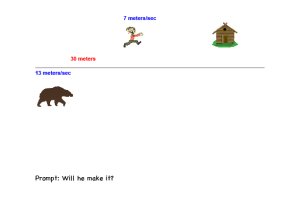Promoting Productive Struggle in Math
Giving middle school students tough problems in advance of instruction pushes them to work like mathematicians.
Your content has been saved!
Go to My Saved Content.Last year I began working at a school with block scheduling, which offered me 100-minute math classes, four days a week. As a math teacher, I’ve always stressed about having enough time in class and was thrilled to begin my new schedule. However, I wasn’t as thrilled about the new curriculum, which left me searching for ways to engage my students in math on a daily basis.
After I watched a TED talk about the power of visual learning, I had an idea to challenge my students with activities that would promote productive struggle. I called these exercises math hooks and began using them in my classes before providing instruction about how to solve them.
Math hooks changed the feel in class right away. There was confusion, conversation, wonder mixed with frustration, some magical revelations, and lots and lots of rigorous thinking. This was all exactly what I was looking for.
Inquiry Before Instruction
Ideally, I wanted every hook to look like this:

A simple visual accompanied by a short, succinct prompt. Not every math standard boils down to such a visual though, so often I use mathematical models, patterns, or matching exercises to catch kids’ attention.
The idea of the hook is to allow students to investigate the concepts within the daily lesson in a straightforward manner through a low-floor, high-ceiling problem that generates conversation.
Sometimes there is no visual component. For example, I gave my students this series of equations:
This hook invites students to investigate properties of powers. Hooks like this are simple to differentiate to the needs of your class or of student groups within the class. The trick is to find the challenge level your kids need.
In the example above, you could ask students to write a fourth example of the rule, write the rule in their own words, create an algebraic rule for the property, or define negative exponents.
To Struggle Is Good
When a hook hits the right level of challenge for your students, it lands with a thud. Students get very quiet. Slowly but surely, however, voices begin to rise. In the beginning, there are questions—lots of them. They’re basic questions like, “What am I supposed to do?” Soon more specific questions arise. Students might ask about the meaning of the exponents, why the answers all have smaller exponents, or why the “big numbers” are the same.
And sometimes that’s it. That’s as far as they can get, and I step in and begin my lesson. However, in that time, my students have collaborated, persevered, and said wrong answers out loud many, many, many times. All of this helps me build a classroom culture that values voices and ideas over right answers.
In the time that students work on a hook, I have the opportunity to gather terrific formative assessment. Best of all, before I’ve even introduced my objective, my students have some questions for me.
Becoming Mathematicians
Before introducing solving systems of equations algebraically to my eighth-grade students, I asked them to work on the following hook:
After the initial shock, many students decided to use Peter’s equation to solve for x. Then they went on to calculate the value of y. Of course, this didn’t reveal to them the process of substitution to solve systems of equations, but it did show their effort and desire to use their prior knowledge to make sense of the new ideas presented to them.
In short, they did what mathematicians do—ask questions and make calculations. They also felt the way mathematicians often feel, completely stumped. All of which, for me, is terrific. Because above all, in math class, I want my students to become mathematicians.
Investment Dividends
Perhaps the largest benefit of using hooks has been the investment it creates in my lessons. Now that I’ve given my students seemingly impossible puzzles to solve, they naturally want to know the solutions. Hooks open students up to asking questions and admitting confusion, something many would never dare do in my traditional lessons. So lessons that begin with a hook get a turbo-boost from students’ engagement.
In addition, there are the benefits of productive struggle: Students attain a deeper understanding of the structure of the problem because they’ve had the opportunity to tackle it on their own first. Using hooks, my lessons feel different, classroom discussions click, rigorous thinking is undertaken, and students enjoy learning. From the students’ perspective, math class becomes fun.
I’ve created hooks for every seventh- and eighth-grade standard and shared them on my website, MathHooks.com. However, new hooks can easily be created and applied at any grade level. Many of the hooks I created were simply the common math models used in my lessons—but presented to students before any instruction.
Allowing students the opportunity to practice inquiry before instruction makes math come alive. It challenges them to engage in struggle, collaboration, and rigorous thinking, and it increases participation in lessons. Most importantly for me, hooks create a feeling of discovery and fun in math class that makes it different from... well, math class.
